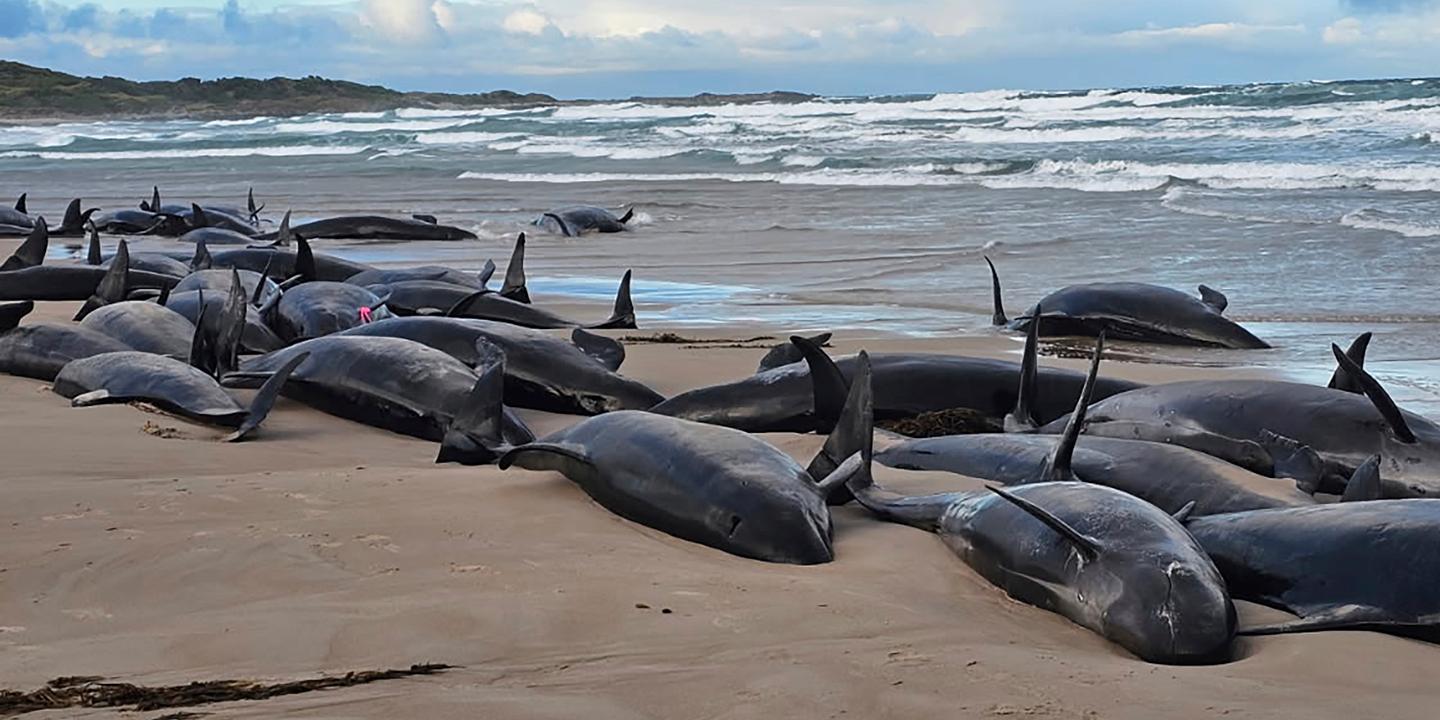
Mass Stranding of False Killer Whales in Tasmania: A Complex Rescue Operation
On a secluded beach in Arthur River, Tasmania, a somber scene unfolded: the distressing image of dozens of glossy black dolphins lying stranded on the sand at low tide. A total of 157 cetaceans ended up beached, an alarming number that has left wildlife officials grappling with a challenging rescue operation.
According to the Tasmanian Department of Primary Industries, Parks, Water and Environment (DPIPWE), approximately 90 of the stranded animals were still alive on Wednesday, February 19. The preliminary assessment suggested that the pod consisted of false killer whales, a species of large predatory dolphins. Some of the whales may have been stranded for up to 48 hours.
Complex Rescue Operation
The rescue operation faced significant obstacles due to the remote location, challenging ocean conditions, and difficulty in transporting specialized equipment. Brendan Clark, a local wildlife biologist, acknowledged the complexities of returning the surviving dolphins to the water, as they can weigh over a ton. Attempts to refloat them directly into the waves would pose significant safety risks to the rescuers.
Euthanasia as a Last Resort
False killer whales can reach lengths of up to 20 feet (6 meters). Like other dolphins, they are highly social animals that often form pods of 50 or more individuals. In cases of mass strandings, euthanasia becomes a necessary consideration to minimize suffering. M. Clark emphasized that veterinarians are present to assess the condition of the animals and make informed decisions if euthanasia becomes the only humane option.
Local Witness Account
Jocelyn Flint, a resident of Arthur River, provided firsthand account of the heartbreaking scene. Her son discovered the stranded whales around midnight while fishing for sharks. She visited the site in the darkness and later returned after sunrise, only to find the dolphins too large to be moved. "The tide was coming in, and they were struggling. They were dying, pushing themselves into the sand," she described. "There were little babies there. And right at the end, there were some really big ones. It’s sad."
Scientific Inquiry
According to Brendon Clark, this is the first mass stranding of dolphins in this part of Tasmania since 1974, when over 160 cetaceans became stranded on a beach near Stanley. "They haven’t had this type of behavior in our waters for a long time… They’re migratory animals, they travel the oceans around the globe," Clark said. "We don’t have any evidence to say why they’ve mass stranded for the first time in 50 years here," he added, noting that autopsies may shed light on the cause.
Global Trend of Mass Strandings
Mass strandings of cetaceans are becoming increasingly common worldwide, yet the scientific community has not reached a consensus on the exact causes. Human activities such as noise pollution, disease, old age, injury, predator avoidance, and extreme weather conditions are considered potential factors.
Previous Stranding Incidents in Tasmania
In 2022, 230 pilot whales stranded further south on Tasmania’s west coast, at Macquarie Harbor. The largest mass stranding in Australia’s history occurred at the same location in 2020, when 470 black pilot whales became trapped on sandbars. The majority of the animals died in both instances. On the mainland, dozens of pilot whales stranded on a beach in southwestern Australia in April 2023.
Conclusion
The mass stranding of false killer whales in Tasmania raises concerns about the health of marine ecosystems and the impact of human activities on cetacean populations. While the reasons for these tragic events remain elusive, ongoing research and conservation efforts are essential to protect these magnificent creatures.
